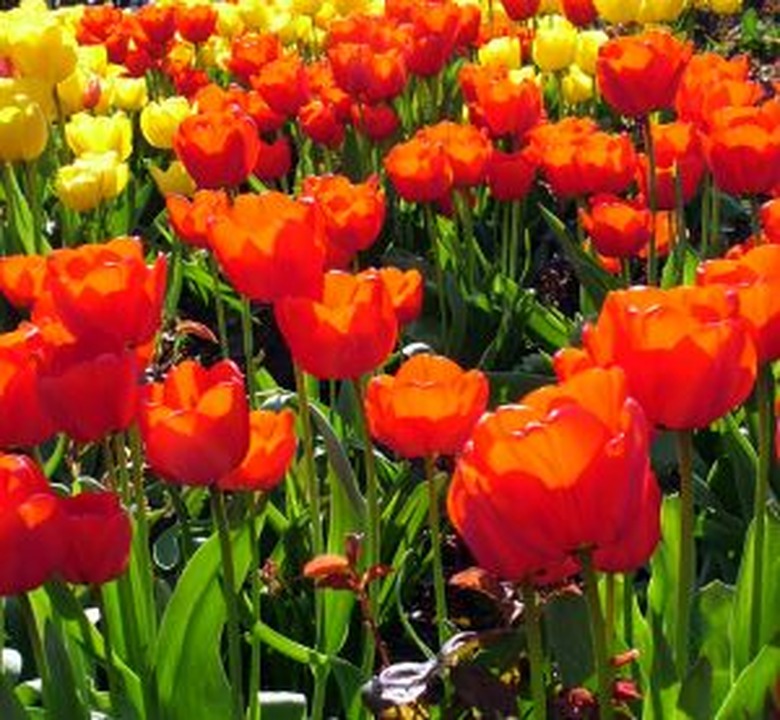How To Use A Bulb Planter
Daffodils, tulips and other flowering plants are often grown from bulbs. Bulb flowers are prized for their ease of care and planting, as compared to seeds. Planting two or three bulbs with a hand trowel is simple work, but it becomes painful to be crouched over or on your knees all day if you have many bulbs to plant. A bulb planter or auger is a tool made specifically for planting bulbs. Simplify your flower planting with this handy tool.
Step 1
Plan your bulb spacing and planting depth depending on variety. In general, plant bulbs to a depth three times their height and 3 to 5 inches apart.
- Daffodils, tulips and other flowering plants are often grown from bulbs.
- Bulb flowers are prized for their ease of care and planting, as compared to seeds.
Step 2
Place the cylinder end of the bulb planter on top of the ground where you wish to plant the bulb. Push the cylinder straight into the ground to your desired planting depth. Step on the protruding bars on either side of the cylinder to help force it into the ground.
Step 3
Rock the planter back and forth slightly to loosen the dirt, then pull up. The plug of dirt is now inside the cylinder.
Step 4
Place your bulb into the hole, root side down and pointy end up.
Step 5
Place the planter back over the hole. Depending on your style of bulb planter, either release the lever to drop the soil plug back in or tap it with your foot until the plug drops back into the hole.
- Place the cylinder end of the bulb planter on top of the ground where you wish to plant the bulb.
Flower Bulb Planter Tool
If you want to cut down on planting time, saving hours kneeling in the garden, attach a specifically designed bulb planter, similar to a simple hand-planter, but with a drill attachment, to your power drill. After attaching the tool to your drill, point the attachment on top of the soil and engage the drill. Find these and similar tools online and often in larger home and garden centers. If you prefer not to stoop to plant your bulbs, consider using a long-handled bulb planter with a release lever and a steel extension handle. With a wood, steel or high impact plastic handle, and sometimes a serrated edge cylinder, short-handled bulb planting tools can range from 10 to 12 inches long, making a hole from 2½ to 3½ inches in diameter. Turn the tool clock-wise and then counter-clockwise a few times to loosen the soil and pull up.
Things Needed
- Bulb planter
- Bulbs
Warning
Do not use a bulb planter to dig up existing bulbs for transplanting or storage, as it may damage the bulbs.
Tip
Use a hand-held bulb dibber for smaller bulbs, such as crocus bulbs. Wet the soil the day before to make planting easier.
